


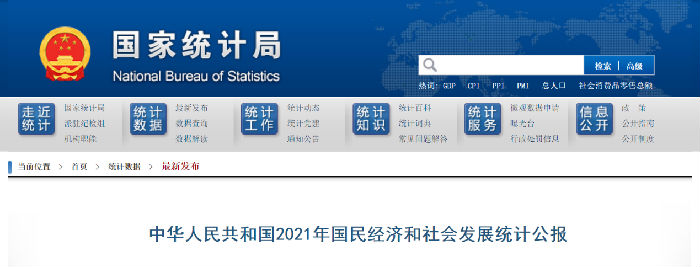
VI. Service Sector
In 2021, the value added of the wholesale and retail trades was 11,049.3 billion yuan, up by 11.3 percent over the previous year; that of transport, storage and post was 4,706.1 billion yuan, up by 12.1 percent; that of hotels and catering services was 1,785.3 billion yuan, up by 14.5 percent; that of financial intermediation was 9,120.6 billion yuan, up by 4.8 percent; that of real estate was 7,756.1 billion yuan, up by 5.2 percent; that of information transmission, software and information technology services was 4,395.6 billion yuan, up by 17.2 percent; and that of leasing and business services was 3,535.0 billion yuan, up by 6.2 percent. In 2021, the business revenue of service enterprises above the designated size grew by 18.7 percent over the previous year, and the operating profits increased by 13.4 percent.
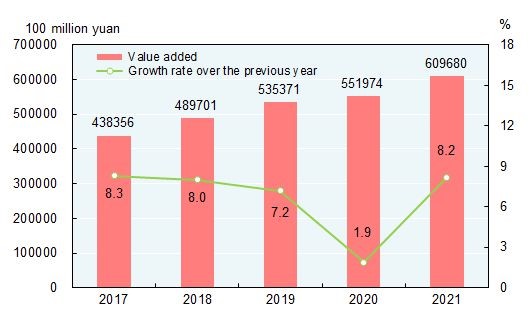
Figure 15: Value Added and Growth Rates of Service Sector 2017-2021
The total freight traffic in 2021 reached 53.0 billion tons. The freight flows were 22,357.4 billion ton-kilometers. The volume of freight handled by ports throughout the year totaled 15.5 billion tons, up by 6.8 percent over the previous year, of which the freight for foreign trade was 4.7 billion tons, up by 4.5 percent. Container shipping of ports reached 282.72 million standard containers, up by 7.0 percent.
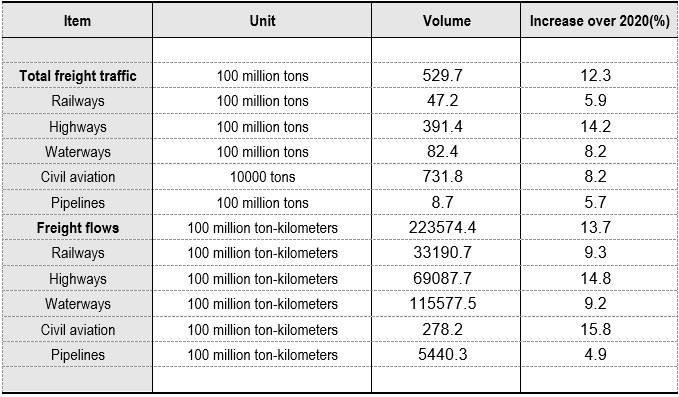
Table 4: Freight Traffic by All Means of Transportation and Growth Rates in 2021
In 2021, the total passenger traffic was 8.3 billion person-times, down by 14.1 percent over 2020, and the passenger flows were 1,975.8 billion person-kilometers, up by 2.6 percent.
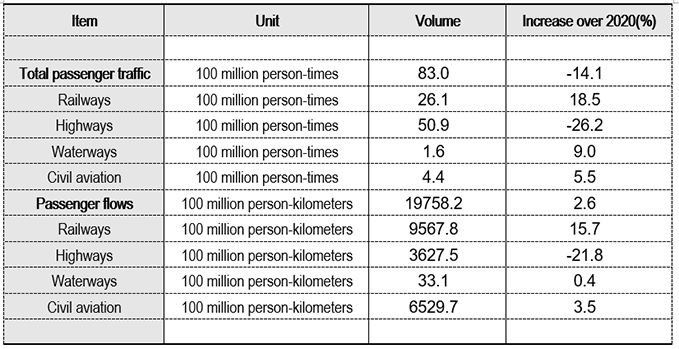
Table 5: Passenger Traffic by All Means of Transportation and Growth Rates in 2021
The total number of motor vehicles for civilian use reached 301.51 million (including 7.32 million tri-wheel motor vehicles and low-speed trucks) by the end of 2021, up by 20.64 million over that at the end of 2020, of which the privately-owned vehicles numbered 262.46 million, an increase of 18.52 million. The total number of cars for civilian use was 167.39 million, an increase of 10.99 million, of which the privately-owned cars numbered 157.32 million, an increase of 10.59 million.
The turnover of post services totaled 1,369.8 billion yuan, up by 25.1 percent over the previous year. In 2021, the number of mail delivery was 1.09 billion; that of parcel delivery was 20 million; and that of express delivery was 108.30 billion with a revenue reaching 1,033.2 billion yuan. The turnover of telecommunication services totaled 1,696.0 billion yuan, up by 27.8 percent over the previous year. By the end of 2021, there were 9.96 million mobile phone base stations, among which the number of 4G base stations reached 5.90 million and that of 5G base stations 1.43 million. In 2021, there were 1,823.53 million phone subscribers in China, of whom 1,642.83 million were mobile phone subscribers. The mobile phone coverage was 116.3 sets per 100 persons. The number of fixed broadband internet users reached 535.79 million, an increase of 52.24 million over the end of the previous year. Of this total, fixed fiber-optic broadband internet users amounted to 505.51 million, an increase of 51.36 million. Users of cellular internet of things terminals totaled 1.399 billion, an increase of 0.264 billion. The number of internet users was 1.032 billion, 1.029 billion of whom were mobile internet surfers. The coverage of internet was 73.0 percent, and 57.6 percent in rural areas. The mobile internet traffic in 2021 was 221.6 billion gigabytes, up by 33.9 percent over the previous year. Software revenue of software and information technology services industry in 2021 was 9,499.4 billion yuan, up by 17.7 percent over 2020 on a comparable basis.
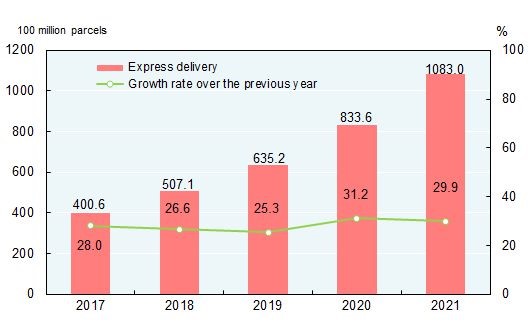
Figure 16: Express Delivery and Growth Rates 2017-2021

Figure 17: Year-end Number of Fixed Broadband Internet Users 2017-2021
VII. Investment in Fixed Assets
The total investment in fixed assets of the country in 2021 was 55,288.4 billion yuan, up by 4.9 percent over the previous year. Of the total, the investment in fixed assets (excluding rural households) was 54,454.7 billion yuan, up by 4.9 percent. Of the investment in fixed assets (excluding rural households), by regions, the investment in eastern areas was up by 6.4 percent, central areas up by 10.2 percent, western areas up by 3.9 percent, and northeastern areas up by 5.7 percent.
Of the investment in fixed assets (excluding rural households), the investment in the primary industry was 1,427.5 billion yuan, up by 9.1 percent over the previous year; that in the secondary industry was 16,739.5 billion yuan, up by 11.3 percent; and that in the tertiary industry was 36,287.7 billion yuan, up by 2.1 percent. The private investment in fixed assets was 30,765.9 billion yuan, up by 7.0 percent. The investment in infrastructure increased by 0.4 percent. The investment in social sector increased by 10.7 percent.
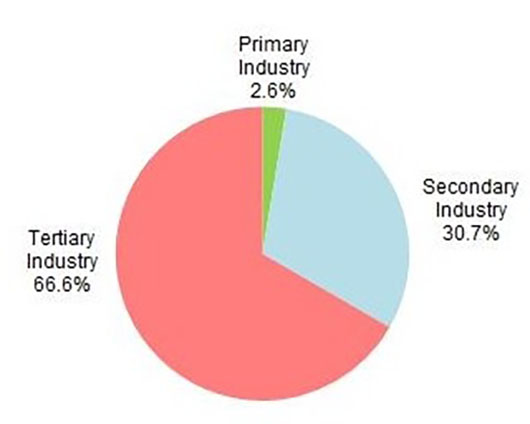
Figure 18: Shares of Investment in Fixed Assets of the Three Industries (Excluding Rural Households) in 2021
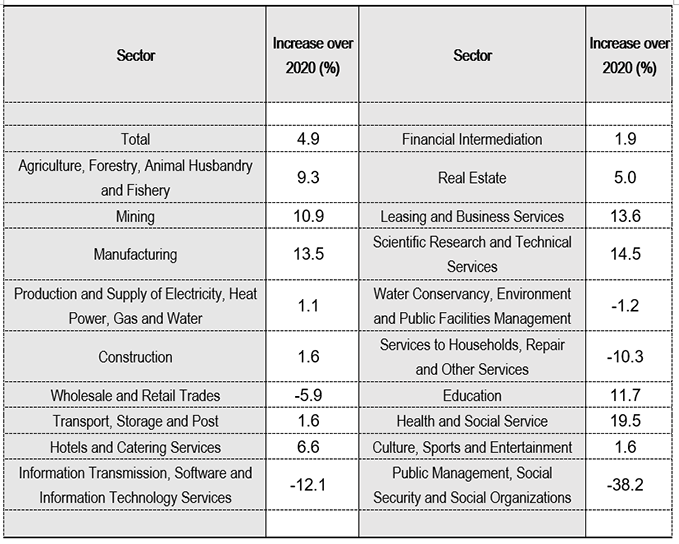
Table 6: Growth Rates of Investment in Fixed Assets (Excluding Rural Households) by Sectors in 2021
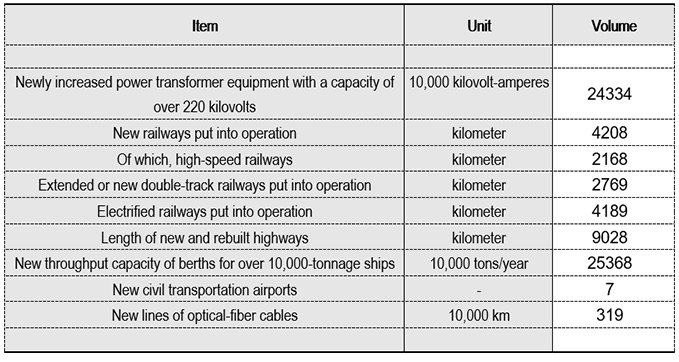
Table 7: Newly Increased Production and Operation Capacity through Fixed Assets Investment in 2021
In 2021, the investment in real estate development was 14,760.2 billion yuan, up by 4.4 percent over the previous year. Of this total, the investment in residential buildings reached 11,117.3 billion yuan, an increase of 6.4 percent, that in office buildings was 597.4 billion yuan, down by 8.0 percent, and that in buildings for commercial business was 1,244.5 billion yuan, down by 4.8 percent. The floor space of the commercial buildings for sale was 510.23 million square meters at the end of 2021, an increase of 11.73 million square meters over that at the end of 2020. The floor space of the commercial residential buildings for sale was 227.61 million square meters, an increase of 3.81 million square meters.
In 2021, 1.65 million housing units were started to be rebuilt in rundown urban areas nationwide and 2.05 million were basically completed. There were 0.94 million units of government-subsidized rental housing that were started to be built or made available.

Table 8: Main Indicators for Real Estate Development and Sales and Growth Rates in 2021
IIX. Science & Technology and Education
Expenditures on research and experimental development activities (R&D) were worth 2,786.4 billion yuan in 2021, up by 14.2 percent over that of 2020, accounting for 2.44 percent of GDP. Of this total, 169.6 billion yuan was used for basic research programs. A total of 48,700 projects were financed by the National Natural Science Foundation. By the end of 2021, there were altogether 533 state key laboratories in operation, 191 national engineering research centers under the new sequence management, 1,636 state-level enterprise technology centers and 212 demonstration centers for business startups and innovation. The National Fund for Technology Transfer and Commercialization established 36 sub-funds, with the total funds reaching 62.4 billion yuan. There were 1,287 state-level technology business incubators, and 2,551 national mass makerspaces. A total of 4,601 thousand patents were authorized, up by 26.4 percent over that of the previous year. The number of PCT patent applications accepted was 73 thousand. By the end of 2021, the number of valid patents was 15,421 thousand, of which 2,704 thousand were domestic valid invention patents. The number of high-value invention patents per 10,000 people was 7.5. Trademark registration totaled 7,739 thousand, up by 34.3 percent over that of the previous year. A total of 670 thousand technology transfer contracts were signed, representing 3,729.4 billion yuan in value, up by 32.0 percent over that of the previous year.

Table 9: Number of Patents Authorized and Valid Patents in 2021
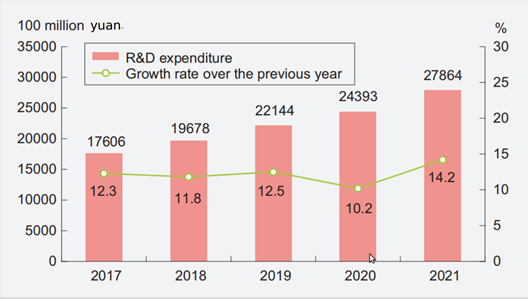
Figure 19: The Expenditure on Research and Experimental Development Activities (R&D) and Its Growth Rates 2017-2021
The year 2021 saw a total of 52 successful space launches. Tianwen-1 probe successfully landed on Mars and Zhurong Mars rover reached the Mars surface. Chinese entered their own space station for the first time by the successful launch of the core module Tianhe and the accomplishment of missions including launches of Shenzhou-12 and Shenzhou-13. The solar observation satellite Xihe was successfully launched. With the successful development of Zuchongzhi 2.1 and Jiuzhang 2.0, China has achieved a quantum computational advantage in two mainstream technical routes of superconducting quantum and photonics quantum. The deep-sea unmanned submersible Haidou-1 broke a number of world records. Hualong-1 nuclear reactor using domestically-designed third-generation nuclear power technology was put into commercial operation.
By the end of 2021, there were altogether 869 national quality inspection centers. There were 932 agencies for product quality and management system and service certification, accumulatively 870,000 enterprises were certified. A total of 2,815 national standards were developed or revised in the year, including 1,900 new standards. The qualification rate of manufactured products reached 93.08 percent.
In 2021, graduate institutes enrolled 3.332 million students with 1.177 million new students and 0.773 million graduates. Total enrollment in undergraduate programs in regular and vocational higher education institutes was 34.961 million students with 10.013 million new students and 8.265 million graduates. The enrollment in secondary vocational education was 17.385 million, including 6.562 million new entrants and 4.841 million graduates. Regular senior secondary schools had 26.050 million enrolled students, including 9.050 million new entrants and 7.802 million graduates. Students enrolled in junior secondary schools totaled 50.184 million, including 17.054 million new entrants and 15.871 million graduates. The country had a primary education enrollment of 107.799 million students, including 17.826 million new entrants and 17.180 million graduates. There were 0.920 million students enrolled in special education schools, with 0.149 million new entrants and 0.146 million graduates. Kindergartens accommodated 48.052 million children. The number of students graduating from compulsory education reached 95.4 percent of the total enrollment, and the gross enrollment ratio for senior secondary education reached 91.4 percent.

Figure 20: Enrollment in Education 2017-2021
Edited by Wang Miao with reference to
<http://www.gov.cn/xinwen/2022-02/28/content_5676015.htm>
<http://www.stats.gov.cn/english/PressRelease/202202/t20220227_1827963.html>